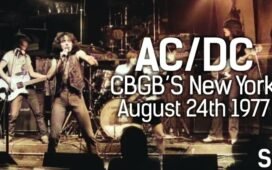Karlheinz Stockhausen appears, among many other cultural figures, on the cover of Sgt. Pepper’s Lonely Hearts Club Band. His inclusion was more than a trendy gesture toward the European avant-garde; anyone who knows that pathbreaking electronic composer’s work will notice its influence on the album at first listen. Paul McCartney himself went on record with his notion that assuming the alter egos of the title would allow him and his fellow Beatles to branch out both culturally and intellectually in their music, incorporating pastiches of Ravi Shankar, B. B. King, Albert Ayler, the Doors, the Beach Boys, and indeed Stockhausen, whose Gesang der Jünglinge had already inspired “Tomorrow Never Knows” on Revolver.
Literally “Song of the Youths,” Gesang der Jünglinge was an early work for Stockhausen, who composed it in 1954, when he was still a PhD student in communications at the University of Bonn. Inspired by not just his technological interests but also his devout Catholicism, he decided to create a mass for electronic sounds and voices, with the intent to debut it at Cologne Cathedral. (Legend has it that he was rebuffed by religious authorities, who insisted that loudspeakers had no place in a house of worship, but sources disagreed on whether he actually sought their permission in the first place.)
He drew its words from a passage of the Old Testament story of three boys cast into the fire by King Nebuchadnezzar for their refusal to worship a golden idol and kept unharmed by the praise to God they sang amid the flames.
In Stockhausen’s high-tech rendering, the boys are represented by the voice of twelve-year-old Josef Protschka (who would grow up to become an acclaimed vocalist in his own right), and the fire by a collage of electronic sounds. Though the composer’s manipulations, part design and part chance, the human and mechanical halves of the piece become one: Protschka’s vocals break apart and reform into fragments of language never before heard, and the artificially generated tones bend uncannily toward the sound of sung vowels. All this, to say nothing of its playback in five-channel sound in a time when stereo was still a novelty, would have sounded deeply, even disturbingly unfamiliar to the audience at Gesang der Jünglinge’s premiere — and its impact probably hadn’t been much diminished by the time of the 2001 performance above. Stockhousen’s music may have been after the shock of the new, but it also faced the eternal.
Related content:
Hear Karlheinz Stockhausen’s Pioneering Compositions for Music Boxes
The History of Electronic Music in 476 Tracks (1937–2001)
Based in Seoul, Colin Marshall writes and broadcasts on cities, language, and culture. His projects include the Substack newsletter Books on Cities and the book The Stateless City: a Walk through 21st-Century Los Angeles. Follow him on the social network formerly known as Twitter at @colinmarshall.















